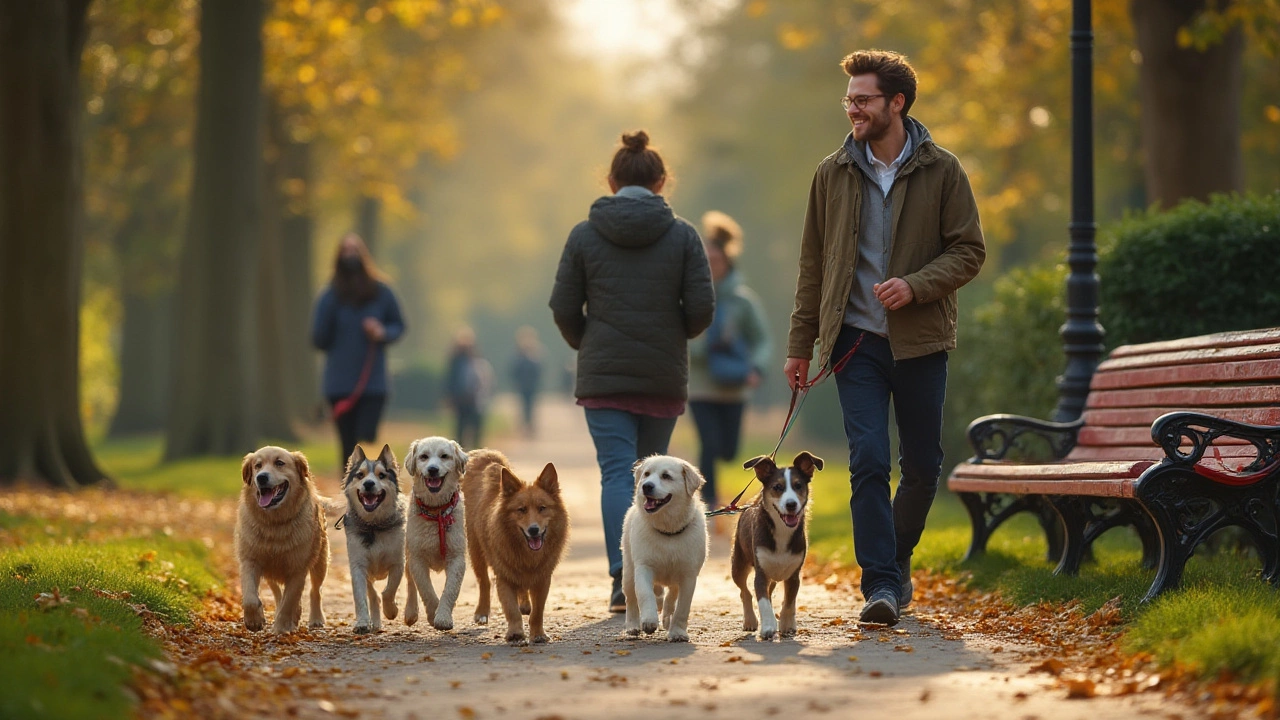Dog Walking Pros: Why Every Walk Matters
Taking your dog out for a walk isn’t just a chore—it’s a win‑win for both of you. Regular walks keep dogs fit, calm, and socially sharp, while giving owners fresh air and a chance to bond.
Physical Perks That Add Up
Think of a walk like a low‑impact gym session. Even a 20‑minute stroll burns calories, supports joint health, and reduces the risk of obesity‑related issues like diabetes. For breeds prone to hip dysplasia, consistent, moderate exercise keeps muscles strong and joints lubricated. Plus, the outdoor temperature changes help regulate a dog’s internal thermostat, which is something indoor play can’t duplicate.
Mental and Behavioral Boosts
Dogs are wired to explore. New scents, sounds, and sights fire up their brain, preventing boredom‑driven problems like excessive barking or chewing. A tired dog is a well‑behaved dog, so you’ll notice fewer impulse antics at home. Walks also teach impulse control—waiting at the curb, staying close on leash, and responding to cues—all of which translate to better manners indoors.
Social interaction is another hidden gem. Meeting other dogs or friendly humans teaches proper greeting behavior and reduces fear‑based reactions. Even brief, safe encounters build confidence, especially for shy or rescue pups.
Bonding and Trust
Sharing a routine creates a predictable rhythm that dogs love. When you pause for a sniff or reward a calm leash walk, you’re reinforcing trust. That trust spills over to other training moments, making your dog more receptive to commands.
Practical Tips for a Successful Walk
Pick the right gear. A well‑fitting harness reduces strain on the neck and gives you better control. Reflective vests are a lifesaver for early morning or evening walks.
Timing matters. Early morning or late evening walks avoid the hottest part of the day in summer. In colder months, a brief warm‑up indoors (like a short play session) helps muscles adjust.
Map a safe route. Choose quiet streets, dog‑friendly parks, or trails with shaded areas. Avoid heavy traffic zones and keep an eye out for toxic plants or broken glass.
Stay weather‑smart. On hot days, bring water and walk on grass instead of pavement. In rain, use a quick‑dry coat and watch for slippery surfaces.
Keep it varied. Change routes every few weeks to keep the experience fresh. Add a few minutes of off‑leash time in a secure dog park if your dog is reliably recalled.
Safety Basics You Can’t Skip
Make sure your dog wears an ID tag and is microchipped. Carry waste bags, a portable water bottle, and a small first‑aid kit. If you’re walking at night, a flashlight or a leash with built‑in LED lights helps both you and your pup stay visible.
Watch for signs of fatigue—heavy panting, lagging behind, or reluctance to move. If you notice these, shorten the walk and give your dog a chance to rest.
Lastly, always respect local leash laws and park rules. They’re there to protect both dogs and people.
When you combine these simple habits with the natural joy of a walk, you turn a routine outing into a powerful health and happiness booster for your dog—and a calming escape for yourself.

Are Dog Walkers a Good Idea? Honest Pros, Cons & Expert Tips
Thinking about hiring a dog walker? We dig deep into the real pros, hidden cons, what to ask, and whether dog walking is a smart choice for your furry pal.
View more